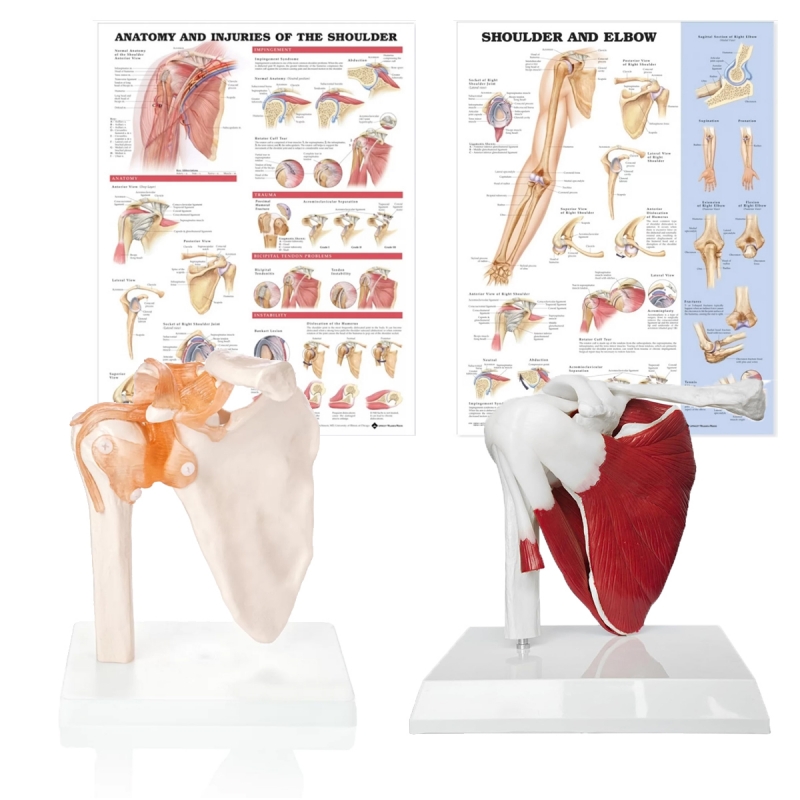
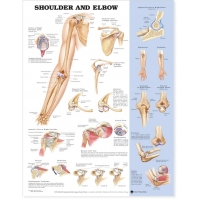
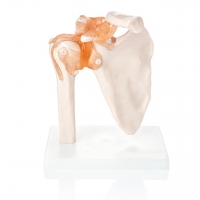
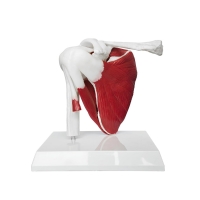
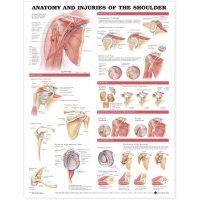





Components
Muscular Shoulder Joint Model: Humerus–scapula–clavicle with superficial myology of the rotator cuff (supraspinatus, infraspinatus, teres minor, subscapularis) and deltoid regions; visible long head biceps tendon and glenoid labrum.
Shoulder Joint Model with Ligaments: Capsuloligamentous complex including superior/middle/inferior glenohumeral ligaments, coracoacromial, acromioclavicular, coracoclavicular (conoid, trapezoid), and transverse humeral ligaments; articulated for demonstration of physiologic ranges.
Charts (52 × 70 cm, special lamination with rollers):
Anatomy of the Shoulder (osseous, capsular, myologic maps)
Injuries of the Shoulder (impingement, rotator-cuff tear, SLAP/Bankart lesions, dislocation, AC sprain, adhesive capsulitis)
Learning Objectives
Identify osseous landmarks: acromion, coracoid, glenoid, greater/lesser tubercle, bicipital groove.
Correlate rotator-cuff function with dynamic stability and humeral head centering.
Explain capsuloligamentous restraint across abduction/external rotation; relate to anterior instability.
Map common pathologies to anatomic structures: impingement (subacromial), cuff tears, SLAP/Bankart, AC injuries, frozen shoulder.
Demonstrate scapulohumeral rhythm and planes of motion for bedside/OSCE teaching.
Specifications
Scale: life-size; material: rigid PVC with color-coded structures.
Mounting: individual base stands for each model; 360° viewing.
Charts: heavy-gauge lamination with top–bottom rollers; marker-wipeable.
Use
UG/PG anatomy, orthopaedics, sports medicine, physiotherapy skill labs; patient education for surgical consent and rehabilitation counseling.
Total Reviews (0)